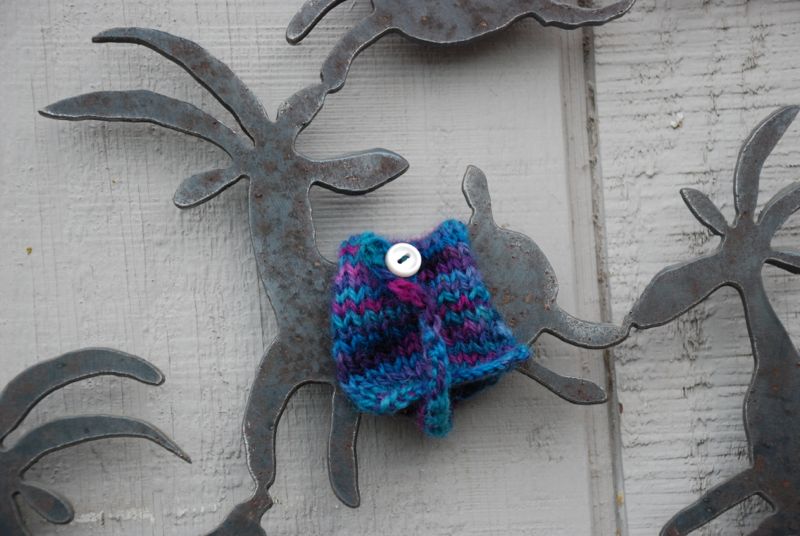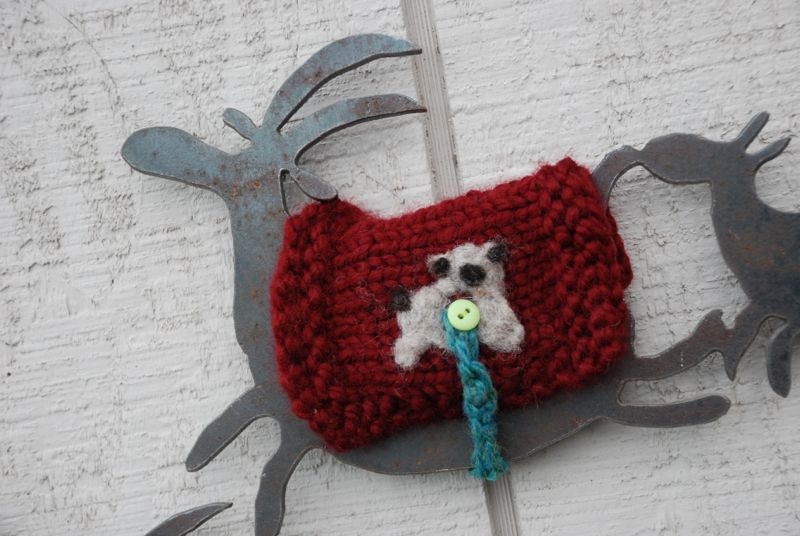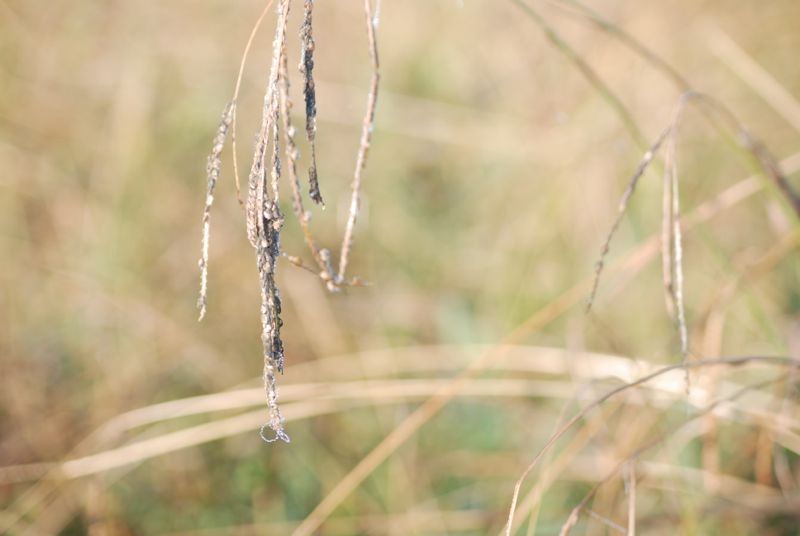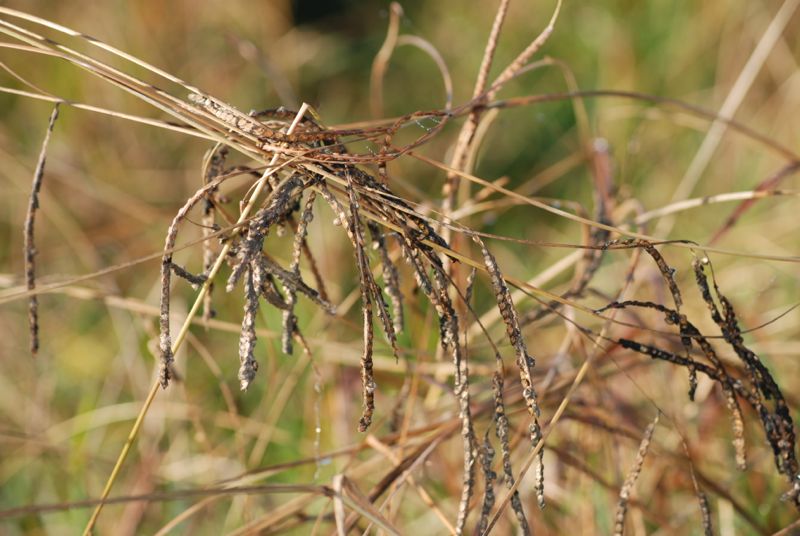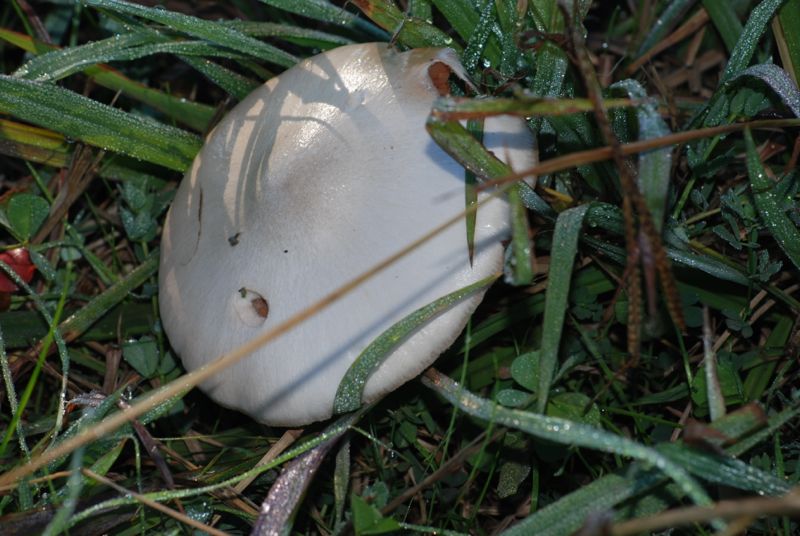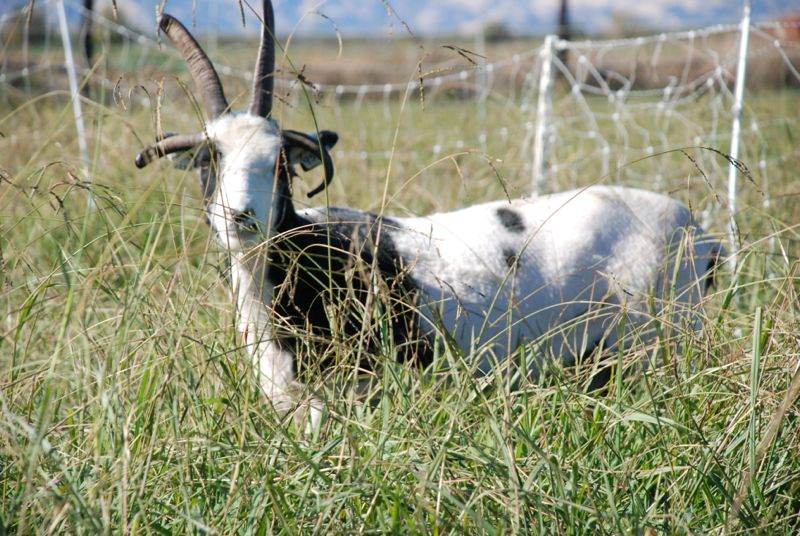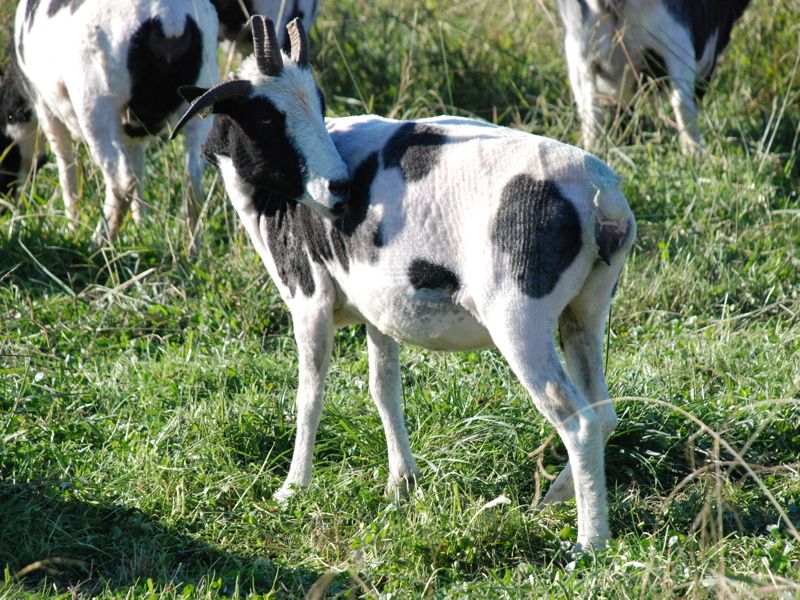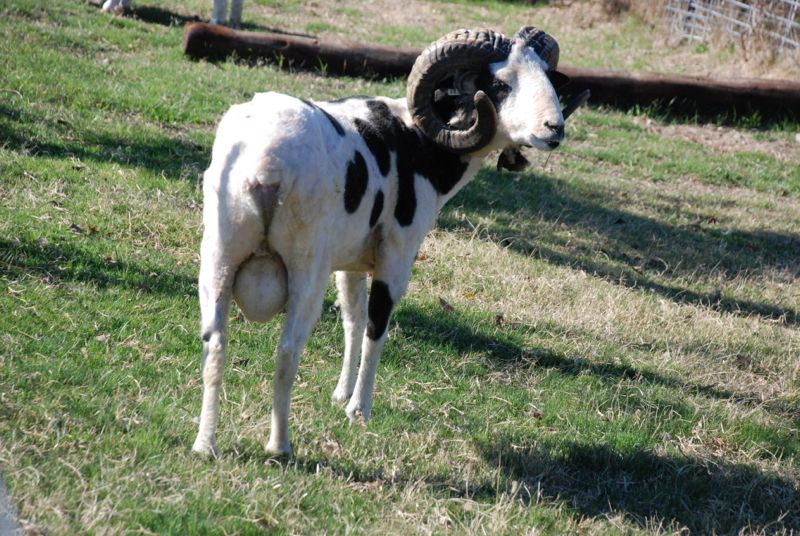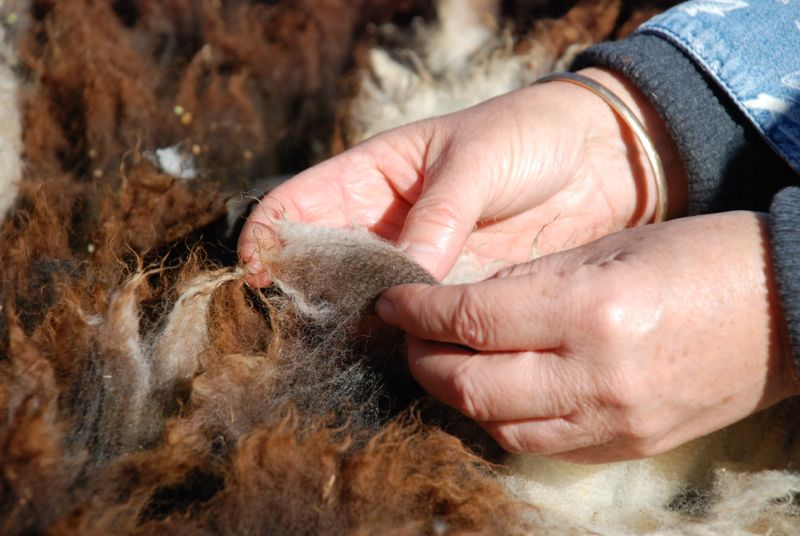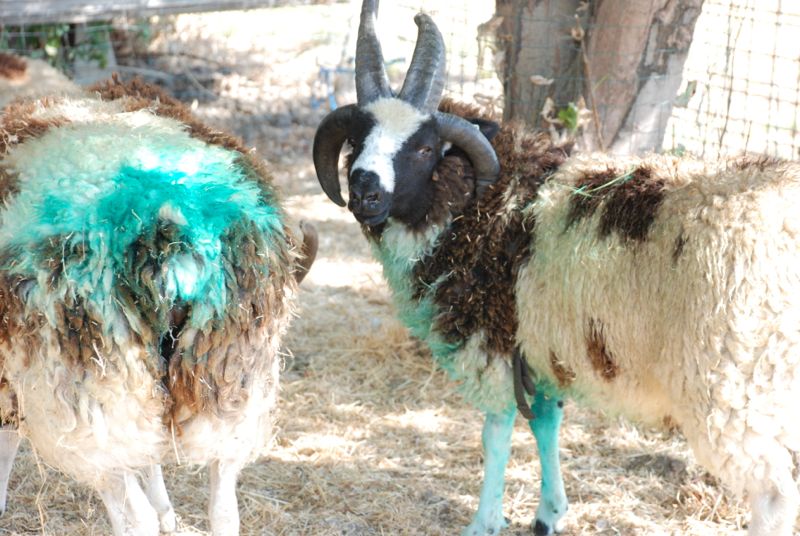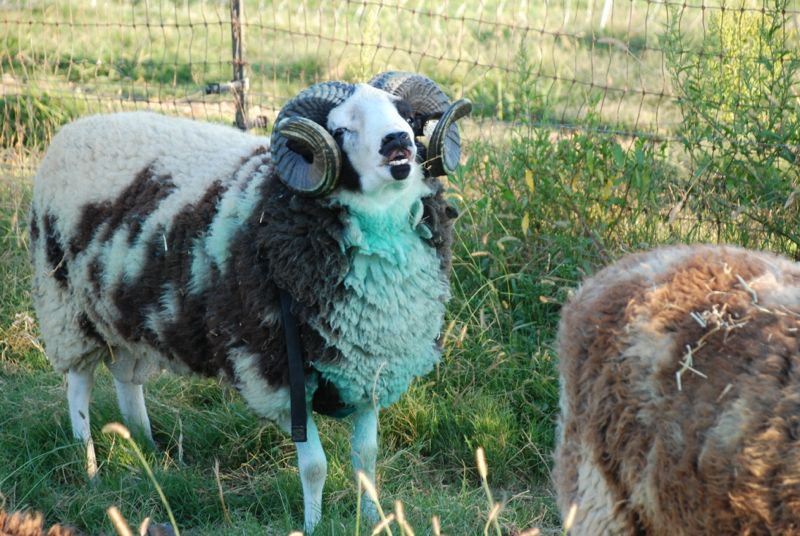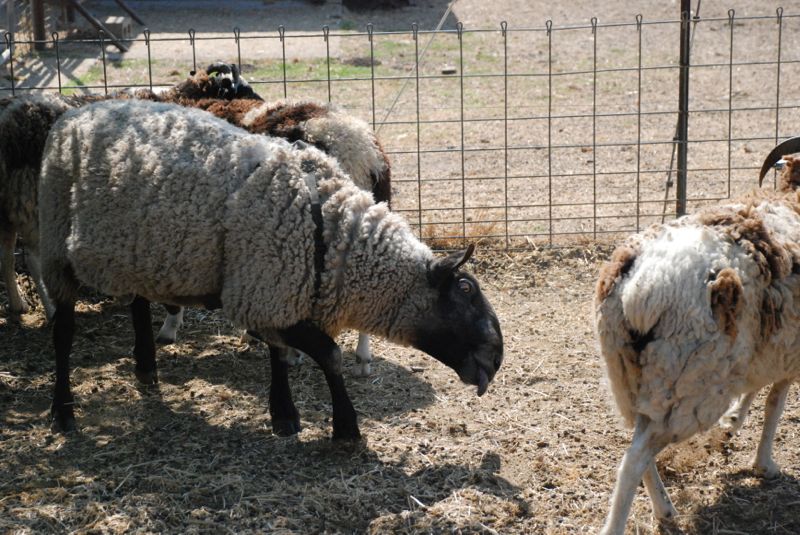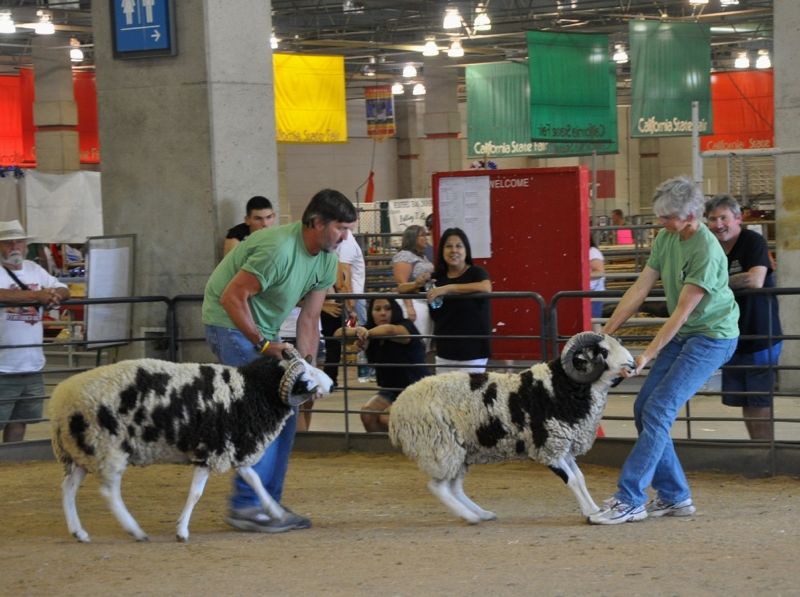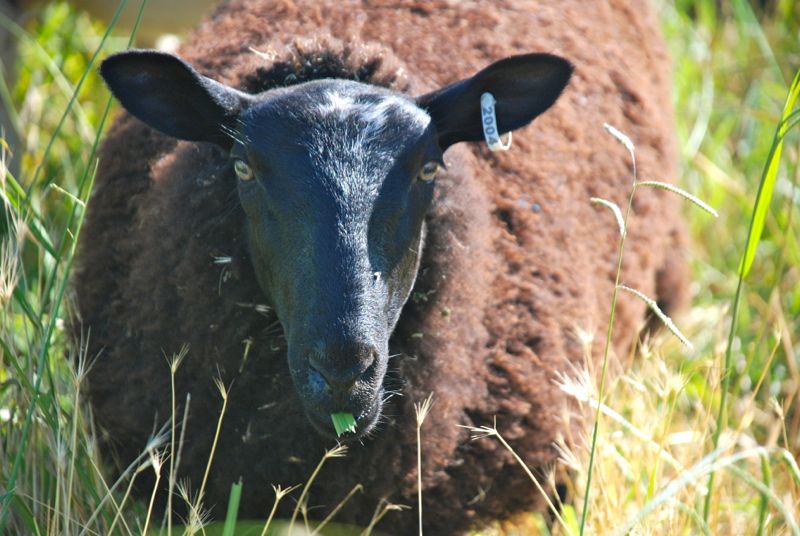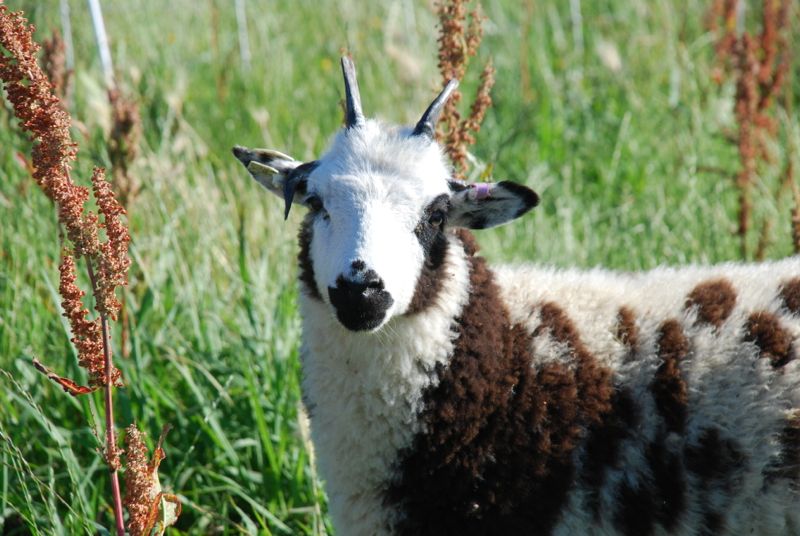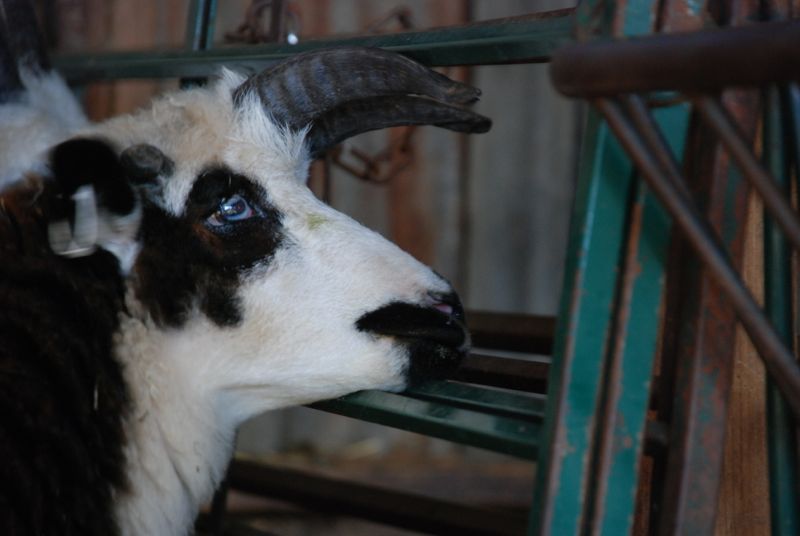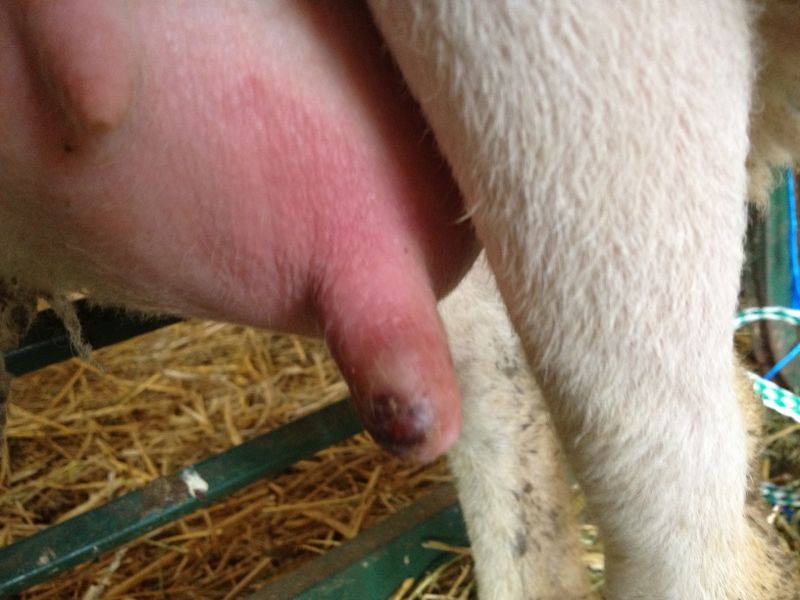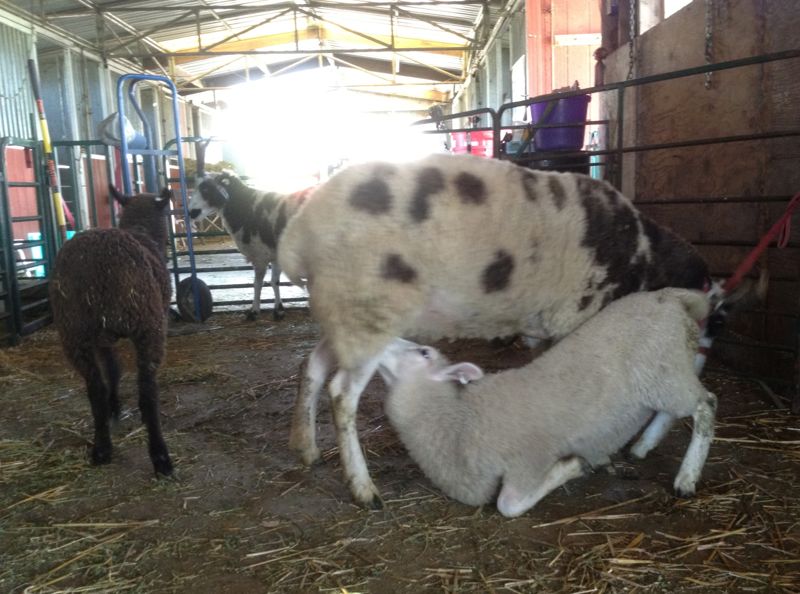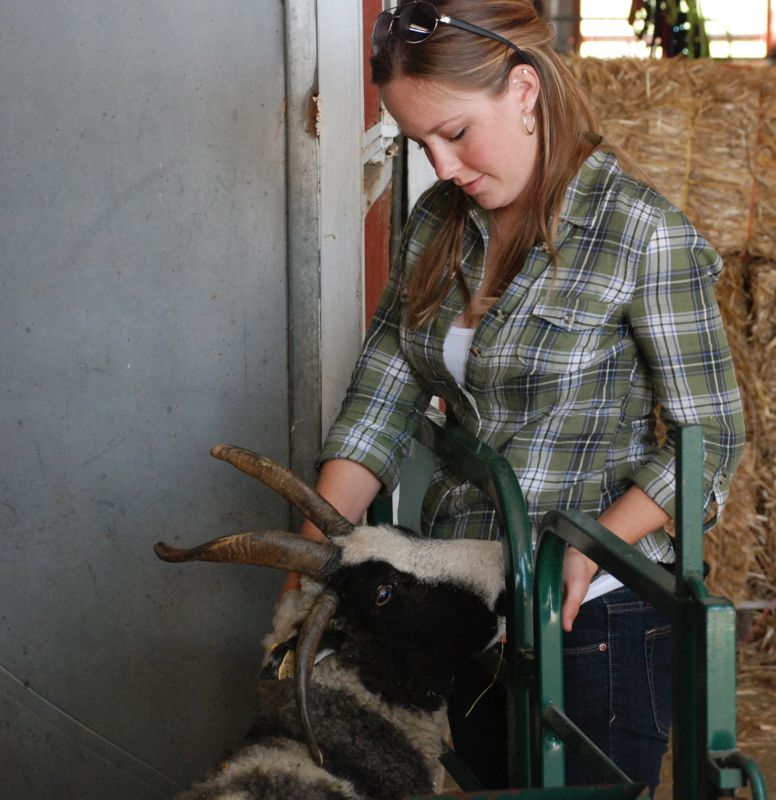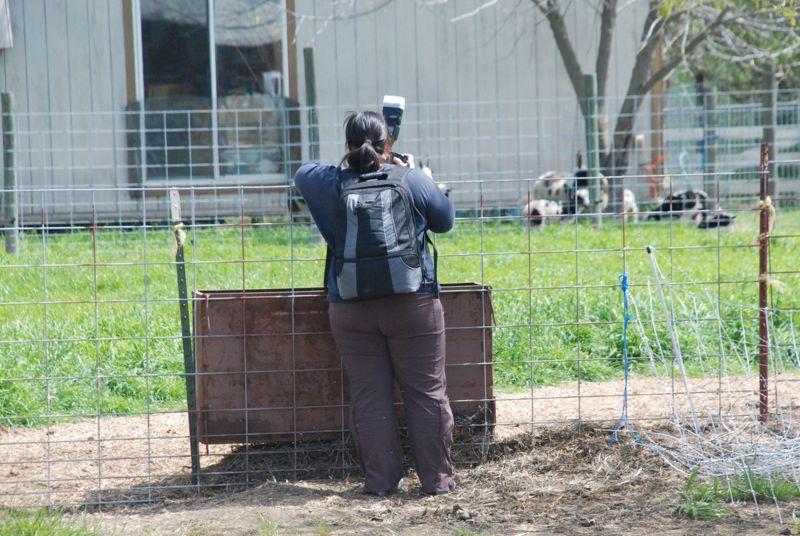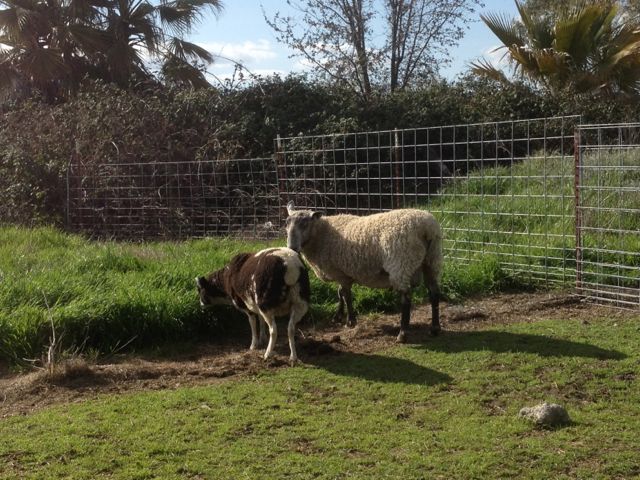Dallisgrass revisited
/I have posted several times about dallisgrass in the pasture. It features in this post a few years ago, this this post about burning it, this post in August 2011 and this post in August 2012. Please ignore the fact that I have spelled it differently in several of this posts. It is dallisgrass and here is a definition: "a tall tufted tropical South American perennial grass (Paspalum dilatatum) introduced as a pasture and forage grass in the southern United States". This came up in an e-mail conversation last night. Why don't I shear before breeding season to avoid the blue and red and green markings on the wool?
 Good question and that is a discussion for another post. I was thinking about pros and cons of shearing before breeding--sometime in September. I was explaining that the dallisgrass grows so tall and develops seed heads in the late summer. At some point in the cycle the seed heads are very sticky and the sheep (and Rusty...
Good question and that is a discussion for another post. I was thinking about pros and cons of shearing before breeding--sometime in September. I was explaining that the dallisgrass grows so tall and develops seed heads in the late summer. At some point in the cycle the seed heads are very sticky and the sheep (and Rusty...
...and my pants) are covered with sticky goo that catches dirt and the seeds that come off of the grass. After a few weeks the sticky part goes away and then fall rains clean the sheep. I thought I'd look this up to see why the seed heads are so sticky. I was surprised to learn that the goo is actually the result of a fungus that is common on dallis grass and is toxic to cattle. Who would have thought? That doesn't change anything, but I find it interesting. So this morning I wanted to see for myself.
 This dallisgrass looks "clean".
This dallisgrass looks "clean".
 The dry grass here is dallisgrass.
The dry grass here is dallisgrass.
 See how tall and thick it is? Some of the leaves are still green, but they are so coarse that the sheep will choose to eat the dallisgrass only after they have eaten all the grass and clover that they prefer.
See how tall and thick it is? Some of the leaves are still green, but they are so coarse that the sheep will choose to eat the dallisgrass only after they have eaten all the grass and clover that they prefer.
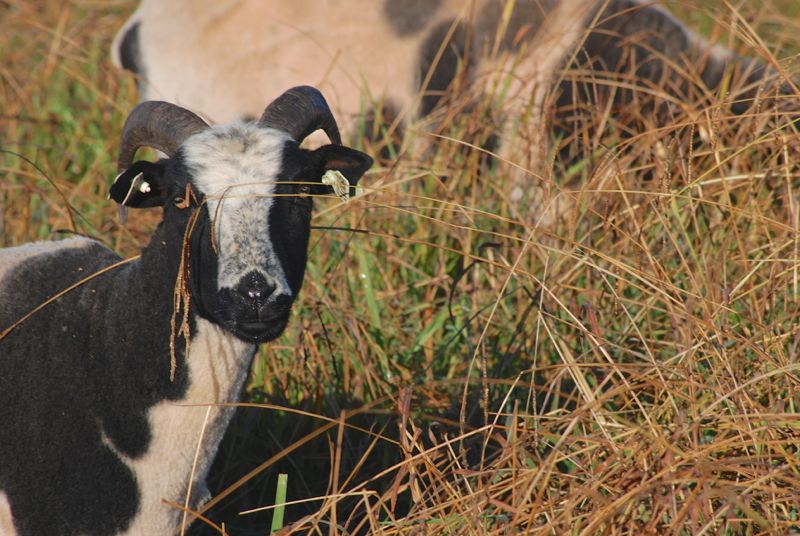 A few sheep photos. This is Sierra.
A few sheep photos. This is Sierra.
 This is Aurelia, the ewe I got from Kreutzer Farms in Nebraska.
This is Aurelia, the ewe I got from Kreutzer Farms in Nebraska.
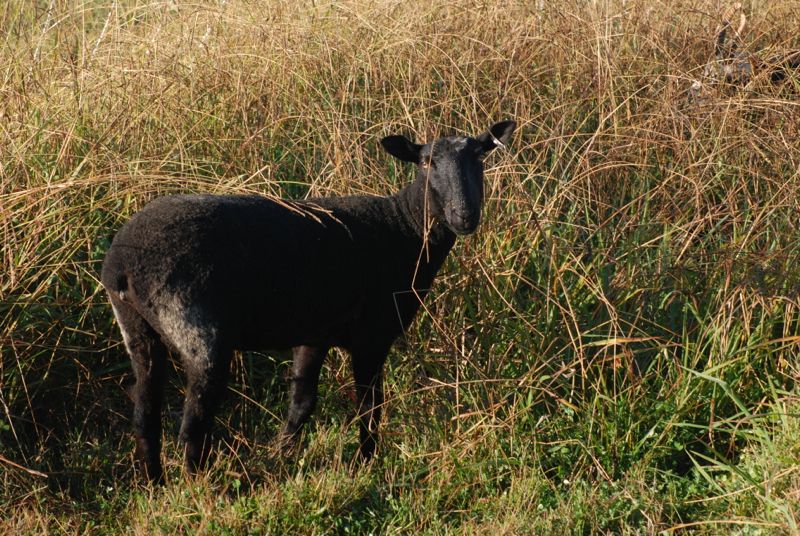 Onyx, the Jacob x BFL cross. Notice the ewe in the top right corner of the photo that is almost invisible in the tall grass.
Onyx, the Jacob x BFL cross. Notice the ewe in the top right corner of the photo that is almost invisible in the tall grass.
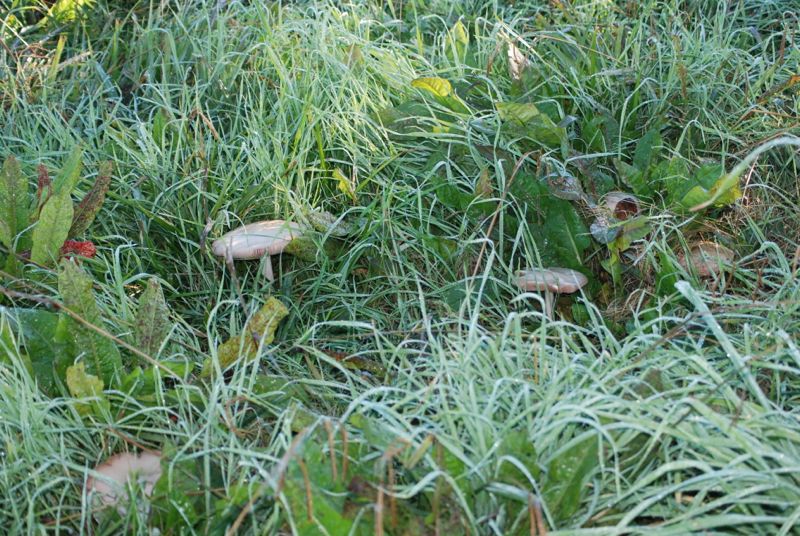 And while I'm talking about fungus in the pasture, what about this one?
And while I'm talking about fungus in the pasture, what about this one?
Shearing Day
/Shearing Day was yesterday. What a wonderful time. Farm Club came through (as always) and handled all the various tasks of the day. (Except for Rusty's job, which he describes in his blog so I am not duplicating his photos here). I am grateful to the great shearer who has come for the last few years. He does a wonderful job--the sheep look good and the fleeces look good. John is so fast that he finished with 64 sheep in about 2 1/2 hours.
 One important job is making sure that the shearer always has a sheep to shear as soon as he finishes with the last one.
One important job is making sure that the shearer always has a sheep to shear as soon as he finishes with the last one.
 I took some videos too but it will take me awhile to get those edited. You can sign up on the Meridian Jacobs YouTube Channel and see them when they are ready.
I took some videos too but it will take me awhile to get those edited. You can sign up on the Meridian Jacobs YouTube Channel and see them when they are ready.
 This is the BFL/Jacob crossbred ewe. I probably could have started a bidding war on her fleece, but I'm keeping it.
This is the BFL/Jacob crossbred ewe. I probably could have started a bidding war on her fleece, but I'm keeping it.
 A couple of people bagged fleeces after shearing and then each fleece was weighed.
A couple of people bagged fleeces after shearing and then each fleece was weighed.
 Alison and Linda helped many new Farm Club members and other visitors evaluate fleeces at the skirting table.
Alison and Linda helped many new Farm Club members and other visitors evaluate fleeces at the skirting table.
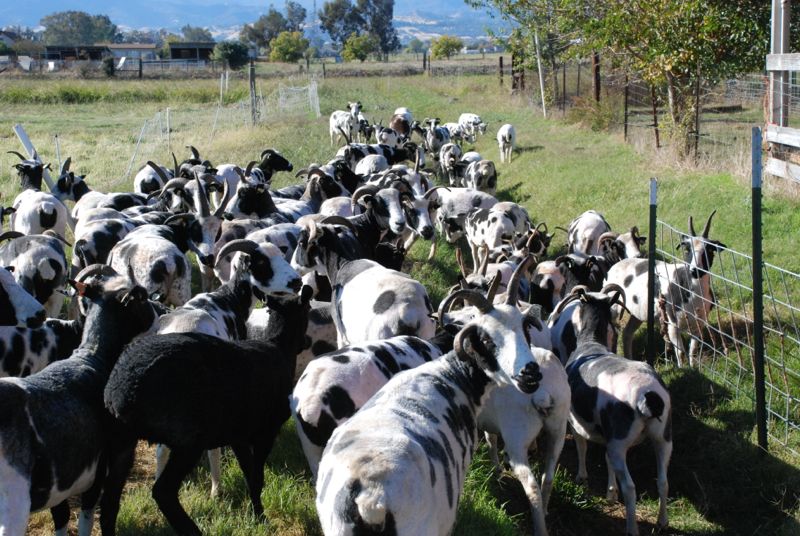 The warm afternoon sun was welcome after the cold morning.
The warm afternoon sun was welcome after the cold morning.
 Good friendships and sharing the work make a day like this extra fun.
Good friendships and sharing the work make a day like this extra fun.
Want a Hug?
/How exciting! Thanks to Dona, who photographed us, we made the Hug A Sheep Day blog with this photo of Farm Club.
 It was a great day to Hug a Sheep and we hugged several! If you want to read about the other things we did yesterday (from Rusty's perspective) read Rusty's blog.
It was a great day to Hug a Sheep and we hugged several! If you want to read about the other things we did yesterday (from Rusty's perspective) read Rusty's blog.
Breeding Season is Here
/Four Farm Club members came today to help me sort out breeding groups. I told myself that using four rams was plenty but in the end I put ewes with six rams. I don't have a very big place and by the time I save spaces for non-breeding rams (a few ram lambs left), non-breeding ewes (my State Fair ewes and lambs and a few ewe lambs that I don't want to breed yet) and try to leave buffer spaces between breeding groups it gets tricky to find space for everyone. Kenleigh's Matrix, a ram lamb, was the first to go out with 14 ewes.
 Meridian Loretta was obviously in heat, but we wondered if Matrix, smaller than the ewes, was going to manage the job.
Meridian Loretta was obviously in heat, but we wondered if Matrix, smaller than the ewes, was going to manage the job.
 Meridian Fogerty, a yearling ram, was next. He has 8 ewes.
Meridian Fogerty, a yearling ram, was next. He has 8 ewes.
 Faulkner was happy to be given eight ewes.
Faulkner was happy to be given eight ewes.
 Meridian Clapton, the ram who has been behaving badly wanted some of the action.
Meridian Clapton, the ram who has been behaving badly wanted some of the action.
 Clapton is temporarily in a small pen so he has just three ewes.
Clapton is temporarily in a small pen so he has just three ewes.
 Puddleduck Sullivan has ten ewes.
Puddleduck Sullivan has ten ewes.
When you first put the rams with the ewes they get a little carried away trying to find a ewe in heat and you may see random marks on some of the ewes. One of the Farm Club members asked how you can tell if the marks from the ram harnesses are the "real thing". I told her that you can tell.
 This is in Fogerty's pen later in the day.
This is in Fogerty's pen later in the day.
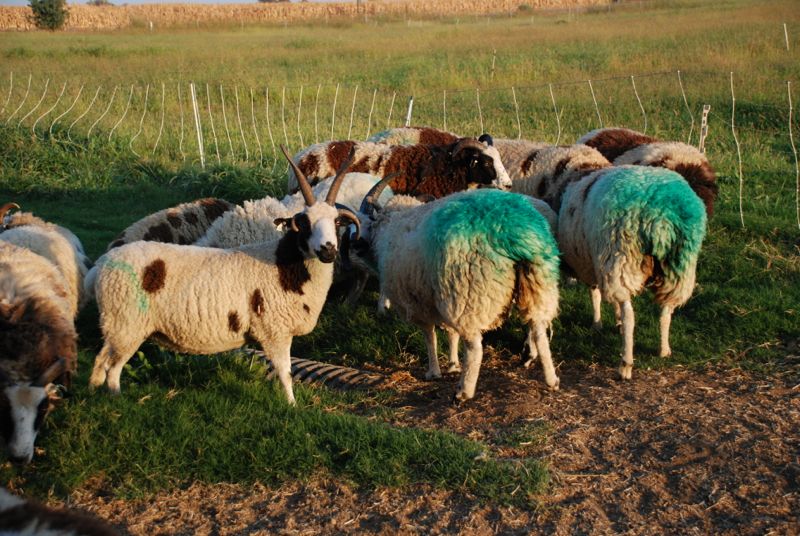 These are two of Matrix's ewes. One is Loretta, the ewe in the first photo.
These are two of Matrix's ewes. One is Loretta, the ewe in the first photo.
It wasn't until the end of the day that I picked up the marker for the sixth ram harness so Meridian Miller (the ram lamb who was champion at the State Fair) didn't get his 7 ewes until evening. He is in the pen right behind my shop.
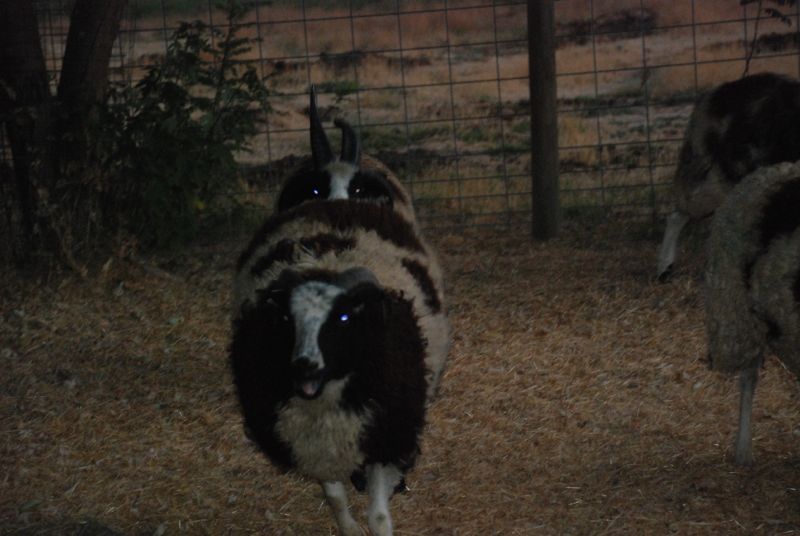 You could say that the ewes were a bit stand-offish, but Miller didn't let that deter him.
You could say that the ewes were a bit stand-offish, but Miller didn't let that deter him.
Where will you be February 21? I'll be in the barn with new lambs.
CA State Fair
/The sheep show is during the last 4 days of the CA State Fair although my ewes with lambs were there for the whole three weeks.

Mary is a 5-time veteran of the Livestock Nursery.
My main focus of the sheep week is the award given for the Marketing Program. This is a stiff competition that is awarded for the display in the sheep barn. I didn't change last year's display very much but I tightened up some things that I wasn't happy with last year. I also learned to make a DVD with several of the videos that I've been working on (some of which are on YouTube) so I had a 45 minute loop that included lambing, lambs playing, and Farm Club.
I wasn't sure how people would react to the lambing video but it certainly caught their attention and most people were in awe.
My friends and I demonstrated spinning and drum carding and that meant that we had a crowd around the exhibit most of the time. In fact this year we were given an area where we could expand into the wide alley.
The real reason to be at the fair is the sheep show. I gave Fogerty to my husband to show because that ram is so strong and I didn't want to risk him getting away from me. However, Sullivan didn't cooperate too well. We switched places and Sullivan followed Fogerty without trouble. Fogerty placed 3rd in this class that included Shetlands and St. Croix sheep.
The best placing of the day was my young ram who placed first in his class...
...and then Champion Ram of the Primitive Breeds show.
The most exciting awards for me were presented at the end of the four days.
I finally won the 1st place Marketing Award (that's one of the leather banners) and Best Educational Presentatation in the Sheep Show and overall for all the livestock divisions at the fair! Should I retire while I'm ahead?
But that's not all there is to the fair. Here are some other photos I like:
Farm Club members, Mary and Dona, cutting up temporary tattoos for give away.
Here is how the tattoos look in use.
There were other animals with horns in the barn.
And other animals with nice fiber.
Animals that combined horns and fiber.
But look at the Supreme Champion Merino ram owned by Terry Mendanhall...
...and see his fantastic fleece.
The Younger Generation
/It simple math. If I had 65 sheep last November and want 65 sheep next November, but 81 lambs were born, that means that I need to sell 81 sheep before November. So out of all the lambs that were born I need to be very selective about which ones I will keep. Here are the chosen lambs so far.

This is Sonata, daughter of Meridian Moon and Sweetgrass Clint.
Lila, a lilac ewe, daughter of Meridian Lola and Mud Ranch's Hudson.
Fandangle, daughter of Meridian Fran and Sweetgrass Clint.
Kenleigh's Isadora who came from Kenleigh's Acres in Oregon.
Mud Ranch's Foxglove and ...
...Mud Ranch's Ginseng, both lilac lambs from Mud Ranch in Lewiston, CA.
There are plenty of other pretty lambs, but most of them will need to find homes elsewhere. I have my eye on one appealing ram lamb:
Axle, son of Meridian Tina and Sweetgrass Clint.
I almost forgot someone:
Onyx, daughter of Sparkle and Faulkner.
This is Fogerty, a ram who was born last spring. He is one of the rams that I will use for breeding this fall. Here is another photo:
Ladies in Waiting
/We're off to the CA State Fair Livestock Nursery.
Mary is a veteran of the fair. This will be her fifth time lambing here. Don't worry Mary. It's just the camera angle that makes your rear look so big.
Mary brought novices with her. That's a yearling ewe, Toffee, lying down and a three year old ewe, Shelby, standing. Shelby is one of the ewes that we "rescued" from a foreclosure last year. (Yes, it's still camera angle, Shelby.)
The State Fair opens tomorrow and runs through the last weekend of July. That's when I'll have more sheep there for the sheep show. In the meantime these three ewes will be well taken care of by the staff and students of the UC Davis VMTH (Veterinary Medical Teaching Hospital). We look forward to lambs in the next couple of weeks.
Additions to the Flock
/I drove to to Mud Ranch Jacobs today, west of Redding, to trade lambs. One lamb is going to Kenleigh Acres in Oregon and the other is staying at Mud Ranch. My Kenleigh lamb came a couple of weeks ago when she was able to hitch a ride south with a friend. Meet Kenleigh's Isadora:

She is the great-granddaughter of Fanny, a favorite ewe of mine.
Isn't she a pretty girl?
The drive to Lewiston was over 3 1/2 hours one way, but it's a pretty drive if you enjoy scenery and I was listening to a good book. (The book is set in modern times in England and, although it doesn't have anything to do with the story-line, the family of the main character raises Herdwick sheep. There are interesting comments about the breed and how they relate to what we would call agritourism.) Anyway, that doesn't have anything to do with my story but it did keep me awake on the drive both ways.
This is Whiskeytown Reservoir and I am amazed at how full it is. I am not a big fan of reservoirs but this is sure pretty (and looks very inviting).
Back to the sheep.
Joan had the lambs sorted out and the lamb for trade was easy to catch and put in the truck.
This is Mud Ranch's Foxglove, a pretty lilac ewe.
But what's this? Is she looking in a mirror?
No, it seems that Foxglove couldn't come without her friend, Ginseng.
Here are the sires of these two lambs:
Foxglove's sire is Kenleigh's Lancelot.
Ginseng's sire is the 2-horn ram in this photo, Tristan.
Welcome to my 3 new lambs.
You Can't Always Count on Genetics
/This is Ebony, a black and white Jacob ewe.

This is Hudson, a lilac Jacob ram.
Here is one of their lambs at almost 2 months old. He is lilac like Dad.
This is the other lamb at about a month old...
... and here he is at just over 2 months. He has been marked with a cull tag because of a severe split eyelid, but also, do you see how his horns are growing?
Both lambs today, at 3 1/2 months old:
I love the horns, the color, and the fleece on this lilac ram, but (as in the discussion over on Facebook) I sure wish that I could combine these lambs into one and keep just the parts I like. Look at those pretty blue eyes on the black and white ram...
...and he has nicely marked feet also.
Speaking of rams, here are a few more photos:
The photo above is of Meridian Clapton at about 6 months...
and here he is as a yearling. Look at the photo below for horn detail on his right side.
The first thing that is unusual is how his horns go behind his neck instead of under, but there is also a fifth horn there.
Meet Puddleduck Sullivan, a 2-horn yearling ram. But is he really a 2-horned ram? I see a seam in those horns that could mean that he is a fused 4-horn. And he also has another horn on this side. People talk about 6-horn Jacob sheep, but I haven't seen any in which the 5th and 6th horns weren't scurs or some how compromised by the larger horns. After all, where would you put another full set of horns?
This is Meridian Fogerty, a another 2-horn yearling ram. I had so many rams last year that I didn't use him, but he will be in this fall's ram line-up. His horns are closer to his face than I'd like, but still OK.
One more ram. Sweetgrass Clint is Clapton's sire and here he is (above) at 6 months old.
This is Clint last fall as an adult.
Bottom line--you don't necessarily get the perfect lamb by breeding two "perfect" parents and you can't predict how the lamb will look as an adult when you buy it at 4 months old.
For more photos of how rams' horns change see my website photo gallery . By the way, Ebony, who is at the beginning of this post, stars in her own video over on YouTube. Click here and find her video to see her having those ram lambs.
Some favorite sheep
/
I took a whole batch of photos yesterday morning before I went to two days of Nikon photography classes in Sacramento. I intended to write a blog post about ewes and their lambs and I took photos of family groups. After the class I'm looking at these photos and thinking...delete...delete...delete. I couldn't bring myself to delete all of them, but I did delete most. And I'm tempted to go back through the last year i-photo and do a big cleansing.
So here are a few photos that I kept and some of them aren't all that great but I like the sheep.
Summer and her triplets
Hot Lips and twins
Dazzle and twins
Lola and daughter
Faulkner
Ebony
Fogerty
Ouch!
/I have been vigilant in trying to watch for mastitis in the ewes. It's not easy to spot until you see a ewe that doesn't want to get up or is lame. Lame? Yes, the infected side of the udder becomes extremely painful and the ewe doesn't want any pressure against it so she limps. Have any of you women ever had a breast infection? Then you know what I'm talking about. I am learning that mastitis in sheep can progress so quickly that you often don't see any signs until it is too late. Prevention or early detection is the answer. (Do I sound like a health care ad?) I noticed a lopsided udder a couple of weeks ago. I caught the ewe and her lambs. It was obvious that the ewe was not letting the lambs nurse on one side. I found a scab at the top of the teat--maybe something that started from vigorous lambs with sharp teeth (nursing moms can relate to that too). I used an udder cream to help soften the scab and I milked her out. Fortunately the milk still looked good--not starting to get chunky or cheesy. I kept that ewe in for a few days, milking her some, but mainly making sure that she let the lambs nurse--which she did when I used the cream on her udder. She is fine now.
Today in the pasture I saw Athena from the rear and thought that she looked a little lopsided, but not too much. I was able to sneak up on her and feel the udder. Hard. Immediate response needed. I brought all the ewes in so I could catch her and her lambs. Here is what her teat looked like:
It is hard and inflexible. A normal teat is squishy so you can actually get milk out. The good news is that the milk is still OK and I can get milk out if I milk her by squeezing the lower part of the udder and the upper part of the teat. The bad news is that it is very painful for her and she will get mastitis if I can't keep the milk flowing or unless I dry her off so that there is no milk production at all. You can't stimulate milk production on one side and not the other.
Here is what her lambs look like right now:
They are 50 & 55 pounds. Although normally I would have let them continue to nurse, at that weight and 2 months old they can be weaned. So they are on their own now and Athena is in a stall with a wether (with whom she is extremely annoyed) on no feed or water for a little while to help with the drying off process (discouraging milk production). Her udder will continue to fill with milk, but that in itself inhibits milk production. I will give her banamine as a pain reliever and anti-inflammatory and LA 200 as a prophylactic aid to prevent infection (not normally done when drying off). Hopefully without the stimulus to produce more milk she won't get mastitis and hopefully the teat will heal without damage that might inhibit next year's milk production. Athena is a really nice ewe and I'd hate to lose her for this.
It's been a week since Meet the Sheep, our spring open house. My internet service has been sketchy and every time I started to add photos it was too slow and I gave up. I think technology has been upgraded and hopefully all is well with our internet tower. I can see that tower on the mountain several miles away (one of many--I don't really know which it is--do you think they could put a ribbon on it so I can pick it out?) and if I can see it, shouldn't the little thing on the roof be able to pick up the signal? The Saturday of Meet the Sheep we had gorgeous weather and I know that was one reason we seemed to be so popular. Dozens of people came and enjoyed the sheep, the goats, fiber, fresh air, and a wonderfully sunny (dry) day. As always Farm Club members were a huge help.
The grass really IS greener on the other side
/Faulkner, the BFL ram lives with his buddy, Jerry, because I don't want to put him up against the adult Jacob rams with horns. He lives in what used to be the pig pen back in our 4-H and FFA days. I have been meaning to expand his pen ever since last year and finally got to it (with the help of son, Chris) yesterday.

Happy Sheep.
Barn chores
/Today I decided to clean the ram pen. Over the last few months the rams have broken a few bars out of the feeder. I didn't realize until a few days ago that they had been pulling most of the hay through the broken area, so there was a big build up of wasted hay.

Rusty moved the rams to the back and I had him keep an eye on them while I worked. (You can read Rusty's blog post about this.)
This shed that the rams have for shelter is an old concrete building that has barbed wire instead of rebar for reinforcement (there is a hole where you can see that). I have reinforced the end of this wall with wood and this is where the gate hangs. That is also where I throw the hay into the feeder and hadn't noticed how it had built up. I was filling up the wheelbarrow and then I noticed this:
This pen had flooded a month or so ago and all that old straw was wet. Look at all those mushrooms. I was glad that my friend, Jackie, was coming over in a little while because I knew that she would be excited about mushrooms.
Jackie has been doing some natural dyeing so we scooped up a lot of these mushrooms and she is going to experiment with them.
Jackie's daughter and her boyfriend are visiting from New York. While her daughter visited with the sheep, Jackie and Mark pitched in and helped me finish cleaning the ram pen. That's my kind of visitors!


